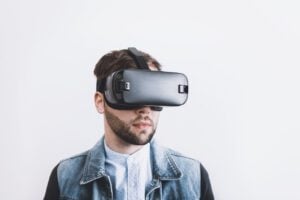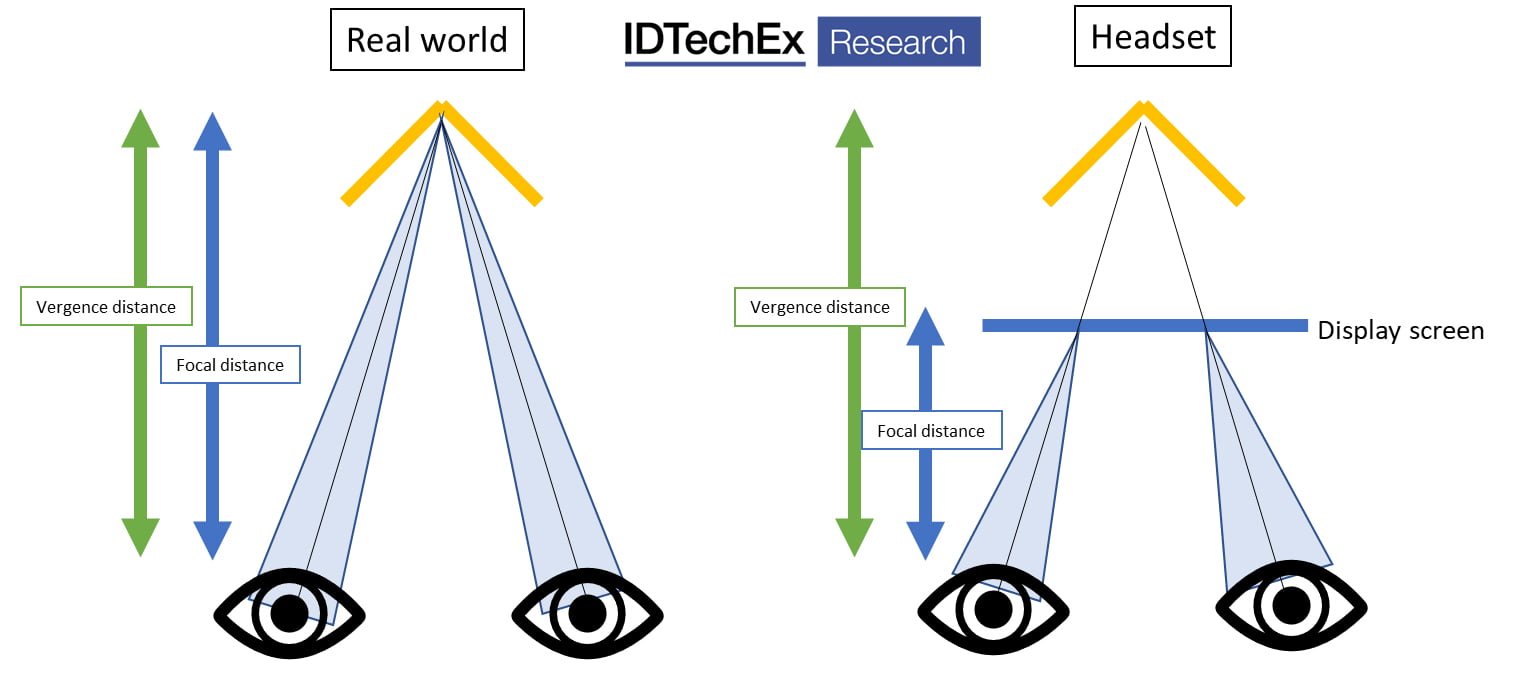By Jacob Wolinsky. Originally published at ValueWalk.

In the coming decade, there will be many technological advances, which will hopefully overcome some of the limitations faced by AR, VR and MR products currently. IDTechEx’s most recent report on “Augmented, Mixed and Virtual Reality 2020-2030” predicts this market to be over $30Bn by 2030, and presents some of the most recent technology advances in this market. This article discusses a variety of issues currently seen in AR/VR/MR, which the coming decade hopes to resolve.
Q1 2020 hedge fund letters, conferences and more
Limitations Of AR, VR, MR Products
The Vergence-Accommodation Problem
A simple google search shows the array of research undergoing on the vergence-accommodation problem. The problem can be simply described as when the brain mismatches cues between a 3D virtual object (the vergence) and the focusing distance (the accommodation). This has traditionally occurred with 3D cinema or any other stereoscopic images. The “accommodation” is the eye’s natural adjustment of the lens of the eye to bring an object of different distances into focus. This can be seen in the image below, where the angle of divergence changes relative to the object’s distance away from the eye.
In the real world, the accommodation and the vergence match, but in VR they are in conflict, and this can lead to eye strain and headaches as the eyes try to accommodate to a variety of distances rapidly. This can lead to other short-term effects when the user removes the headset such as blurriness. Before using a Virtual reality headset, the “inter-pupillary distance” should be measured – this distance is used to triangulate the distance to the eyes and the object. This helps improve the experience for the user by reducing the effect of this issue in VR.
One method to overcome the vergence accommodation issue to have a field of view which focuses in and out depending on the user’s viewpoint, this requires eye-tracking capabilities and specialised software. NVIDIA Near Eye Light Field Display prototype was introduced in 2013 which uses a microlens display to divide an image to individual light rays, and the display creates a light field directly in front of the user’s eyes. This allows the user to focus on the different depths of the scene. Some other methods to overcome this problem are: to minimise the consequences by making exiting conflicts less common (e.g. increasing the distance to the virtual scene where possible), maximising the depth of other cues (e.g. shading realism, perspective, and other small visual cues), taking time for objects to move in and out of depth to give the users eyes time to adjust.
AR, VR And MR Products: Motion Sickness
Another side-effect, which is seen more commonly with VR headsets, is motion sickness. This tends to be a result of latency, tracking and other such effects. Users are subject to a perception of moving but are not themselves moving, and this can lead to motion sickness because the image does not match the other sensory inputs from the user standing still. Similarly, if the user moves their head quickly, the image must match to their movement. A lag between the image and the movement could also lead to feeling motion sick whilst wearing a VR headset. This means that users may not wish to use the headset for an increased period, due to this side effect.
With the past decade of development for this technology, the 2020-2030 decade is destined to be an exciting time for AR, VR and MR products. By solving the issues currently seen in these devices, there will be a greater uptake of this technology, for both a consumer and industry/enterprise space. To find out more on this, and other AR/VR/MR forecasts and technologies, to take a look at the IDTechEx Report on AR and VR, please visit www.IDTechEx.com/ARVR.
The post AR, VR and MR products: What can be improved? appeared first on ValueWalk.
Sign up for ValueWalk’s free newsletter here.




